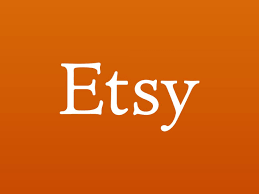In the vast universe of the digital age, the ability to extract information from websites is akin to finding hidden gems. Web scraping is the key to unlocking this potential. Let’s take a detailed journey into the world of web scraping and uncover the steps to get started.
Dive into Web Scraping: An Overview
Understanding Web Scraping
Web scraping is a process where data is automatically collected from the internet. It’s similar to copying text from a webpage, but on a larger scale and without manual effort.
Why Engage in Web Scraping?
There are countless reasons to scrape websites:
- Business Insights: To understand market trends, product prices, and customer reviews.
- Research Purposes: For academic studies, collecting vast amounts of data is often necessary.
- Content Creation: For bloggers and journalists, it’s a way to gather information from multiple sources.
Getting Started: The Basics of Web Scraping
Essential Tools for Scraping
Before venturing into web scraping, it’s crucial to familiarize oneself with the right tools:
- Python: A versatile and beginner-friendly programming language.
- Beautiful Soup & Requests: These are Python libraries specifically crafted for easy and efficient web scraping.
Grasping Web Structure
The foundation of websites is primarily HTML code. By understanding basic HTML elements like headings, links, and images, you’re setting yourself up for scraping success.
A Detailed Guide to Web Scraping
1. Reaching Out to the Website
The first step is to “ask” the website for its data. This is done using Python’s Requests library which sends a request to the website and fetches its content.
2. Sorting and Extracting Data
Once you’ve received the data, the Beautiful Soup library can help you navigate through it. It acts like a guide, helping you locate the exact pieces of information you need.
3. Navigating Through Multiple Pages
Websites often have numerous pages of content. To scrape data from all pages, one needs to learn to traverse through these pages, which might involve identifying patterns in web addresses or following links systematically.
4. Data Storage: Safeguarding Your Finds
Once you have your data, it’s important to store it appropriately. Depending on your requirements, you might choose databases, spreadsheets, or even plain text files.
Ethical Considerations in Web Scraping
Staying on the Right Side of the Web
While web scraping is powerful, it’s essential to approach it responsibly. Most websites have a robots.txt file which lays out guidelines on what can or cannot be scraped. By respecting these guidelines, you ensure you’re scraping ethically.
Data Usage: The Importance of Integrity
Once data is scraped, it’s paramount to use it responsibly. Always respect privacy concerns, and when using data for reports, research, or any other purpose, ensure the information is used constructively.
Deepening Your Skills: Continuous Learning in Web Scraping
Connect with the Scraping Community
The world of web scraping is vast and dynamic. Engage with online communities, forums, and courses to stay updated and learn from fellow enthusiasts.
Regular Tool and Skill Upgrades
With the digital realm evolving constantly, keeping your tools updated and brushing up on the latest techniques ensures you’re always ahead in your web scraping journey.
Harnessing the power of web scraping provides access to the boundless information available on the web. By adopting the right tools, ethical practices, and a mindset of continuous learning, the digital realm offers endless possibilities to those ready to explore!

